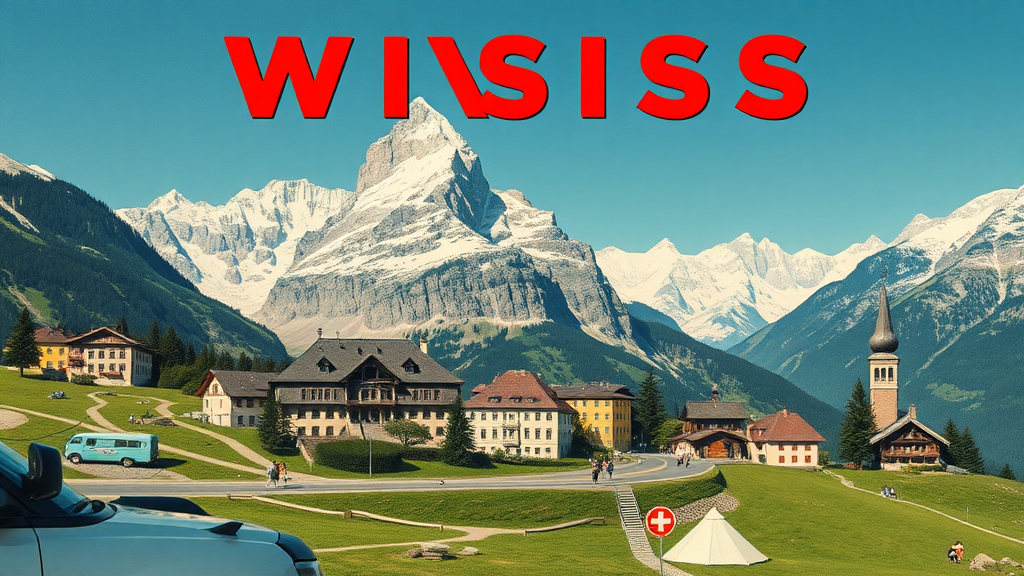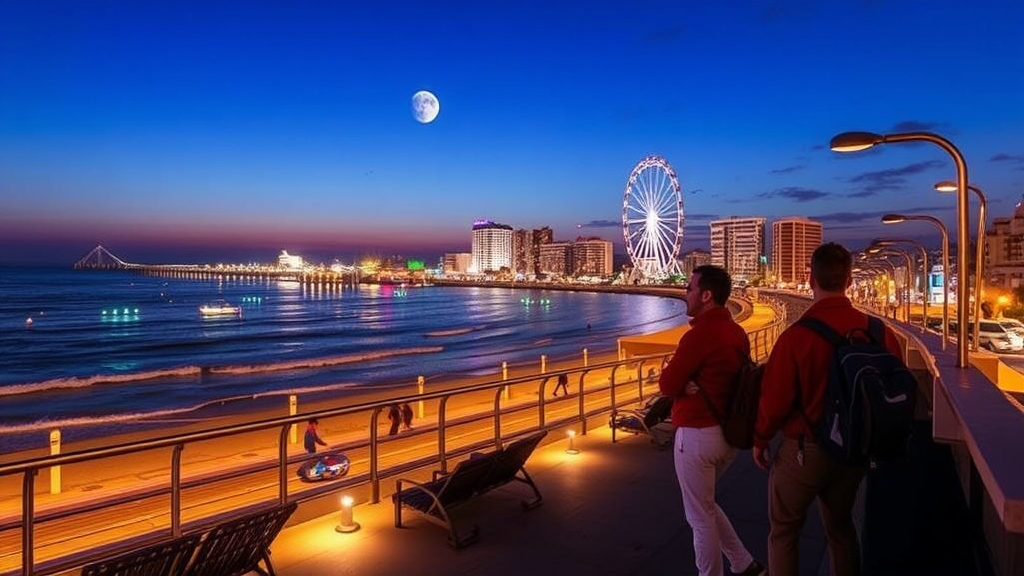The Artistic Significance of Martin Peikert’s Swiss Travel Poster
One of the most striking features of Peikert’s work is the vibrant use of colors. The poster showcases the stunning landscapes of Switzerland, from the majestic Alps to serene lakes. The color palette often includes deep blues representing the lakes and skies, complemented by bright greens and whites that symbolize lush valleys and snow-capped mountains. This careful selection of colors invites the viewer to feel the freshness and vitality of the Swiss outdoors.
The composition of the poster also plays a crucial role in its artistic significance. By strategically placing elements within the frame, Peikert creates a sense of depth and perspective. The foreground often features iconic Swiss symbols, such as chalets or local flora, leading the eye into the background where the breathtaking nature unfolds. This technique not only pleases the eye but encourages a sense of adventure, inviting viewers to imagine themselves journeying through the landscapes depicted.
Typography in Peikert’s poster is another essential aspect worth discussing. The fonts he used were carefully chosen to blend smoothly with the overall design while embodying the spirit of Swiss precision. The clear and legible typeface helps convey information effectively, making it easy for travelers to understand the allure of visiting Switzerland. This attention to detail amplifies the charm of the work.
Moreover, the cultural context of Peikert’s creation is significant. During the early to mid-20th century, Switzerland was becoming increasingly popular as a travel destination. With advancements in transportation, more people could access the breathtaking beauty the country had to offer. Peikert’s artwork resonated with this zeitgeist, becoming a tool not only for advertising but also for generating national pride.
Here are a few highlights of the artistic significance of Martin Peikert’s Swiss travel poster:
- Vibrant Color Usage: The colors evoke emotions connected to nature.
- Dynamic Composition: Encourages exploration and captivates the viewer.
- Intuitive Typography: Enhances readability while matching the artistic style.
- Cultural Impact: Reflects the rise of travel culture and Swiss identity.
The way Peikert represents Switzerland goes beyond mere imagery. His ability to balance art and functionality speaks volumes about the era’s design philosophy. The poster has thus become an enduring piece of visual communication that continues to inspire both artists and tourists alike.
Another noteworthy aspect of the poster is its historical relevance. It serves as a valuable artifact in the context of Swiss tourism. This artistic piece documents how Switzerland was marketed for tourism, illustrating a significant transition in social attitudes towards travel. By creating such pieces, Peikert helped lay the groundwork for modern travel advertising.
Many art enthusiasts and historians view Peikert’s work as a precursor to contemporary travel posters. The aesthetic choices he made influence modern graphic design, pushing the boundaries of how landscapes and destinations are visually communicated. Today, graphic designers still reference his style for inspiration in travel marketing. These influences can be seen in various campaigns aimed at enticing travelers toward nature-rich locales.
Swissinfo provides an insightful glimpse into Peikert’s impact on Swiss tourism.
The lasting legacy of Martin Peikert’s Swiss travel poster showcases his artistic prowess as well as his understanding of the emerging travel culture. His work not only serves as an artistic landmark but also as a poignant reminder of how art can bridge the gap between places and ideas. By communicating a sense of place, Peikert has left an indelible mark on the world of travel and design.
For anyone interested in exploring the world of travel posters further, Posters Swiss offers a comprehensive collection highlighting Swiss travel art, where you can see the evolution of styles and themes stemming from masterpieces like Peikert’s.
Analyzing the Design Elements in Swiss Travel Posters
Swiss travel posters, especially those designed by renowned creators like Martin Peikert, play a crucial role in the promotion of Swiss tourism. The design elements in these posters effectively capture the essence of Switzerland’s breathtaking landscapes, cultural richness, and adventurous spirit. When analyzing these elements, you can better understand why they resonate so well with viewers and travelers alike.
Visual Imagery that Captivates
One of the primary design elements you’ll notice in Swiss travel posters is the use of stunning visual imagery. The picturesque mountains, lush valleys, and serene lakes create a desire to explore the natural beauty of Switzerland. Designers like Peikert often use vivid colors and dynamic contrasts to bring these landscapes to life.
- Color Palette: The vibrancy in the hues used—greens for the valleys, blues for the lakes, and whites for the snow-capped peaks—reflects the true colors of Switzerland.
- Focal Points: The main visual elements, such as iconic structures or scenic views, draw the viewer’s eye immediately, creating a sense of wonder and allure.
Typography and Font Choices
The typography used in Swiss travel posters is just as important as the visual elements. The fonts often reflect the Swiss identity—clean, modern, and easily readable. This is crucial for conveying the message quickly and effectively to the audience.
- Sans-serif Fonts: These fonts are commonly used for their legibility and contemporary appeal.
- Vintage Feel: Some designs feature retro fonts that evoke nostalgia, appealing to travelers looking for timeless experiences.
Composition and Layout
The layout of Swiss travel posters, particularly those created by Peikert, adheres to a carefully organized structure that enhances the overall message. The balance between imagery and text is crucial in making the poster visually engaging.
| Element | Description |
|---|---|
| Balance | Images and text are often evenly distributed to create harmony. |
| Hierarchy | Key information is highlighted through size and placement, guiding the viewer’s eye naturally. |
The Role of Symbols and Icons
Swiss travel posters frequently incorporate symbols and icons that represent the culture and heritage of Switzerland. From the famous Swiss Alps to traditional elements like fondue pots, these symbols evoke curiosity and familiarity.
- Flags and Emblems: National symbols emphasize patriotism and cultural pride.
- Cultural Icons: Elements depicting cultural activities—like skiing or hiking—signal adventure and excitement.
Simplicity and Clarity in Messaging
A vital aspect of effective design is simplicity. Swiss travel posters tend to convey their messages in a straightforward manner. Uncomplicated designs help to communicate the allure of the destination quickly, making it easier for the viewer to grasp what the poster promotes.
- Minimal Text: By keeping the text concise, the viewer can focus on the visual aspects.
- Clear Calls to Action: Inviting phrases encourage viewers to visit the featured locations, such as “Discover the Beauty of Switzerland.”
The Emotional Connection
Beyond aesthetics, the design elements evoke emotions that resonate with potential travelers. Martin Peikert’s work and similar designs often aim to inspire a feeling of wanderlust. This emotional pull is crucial for driving tourism and fostering a connection between viewers and Swiss culture.
Understanding these design elements helps appreciate the artistry involved in Swiss travel posters. The combination of captivating imagery, thoughtful typography, structured layout, and cultural symbolism all draw people in. To explore more about the evolution of Swiss design and its impact on travel marketing, visit Swiss Travel Posters and Martin Peikert’s Official Site.
This exploration of design elements within Swiss travel posters showcases how effective design can engage and persuade. It goes beyond attracting attention—these designs help tell a story, inviting viewers to be part of the adventure that awaits them in Switzerland.
The Role of Travel Posters in Promoting Swiss Tourism
The allure of Switzerland has been captured beautifully through the medium of travel posters, particularly those designed by renowned artist Martin Peikert. His creations not only represent Switzerland’s stunning landscapes but also play a significant role in promoting Swiss tourism. Travel posters, like Peikert’s, evoke emotions and transport viewers to idyllic destinations, inspiring them to explore the country’s breathtaking scenery and rich culture.
Travel posters serve several essential functions in the marketing of tourism. Here are a few key roles they play:
- Visual Appeal: The first impression is often the most lasting. Colorful and captivating visuals draw attention and entice potential travelers to consider a destination. Martin Peikert’s Swiss travel poster exemplifies this with its vibrant colors and picturesque landscapes, effectively showcasing Switzerland’s charm.
- Storytelling: A travel poster doesn’t just show a place; it tells a story. It captures the essence of an experience. For example, Peikert’s designs often include elements of Swiss culture, making viewers feel an emotional connection to the landscapes depicted.
- Creating Curiosity: Posters can inspire curiosity about unknown places. The beauty shown in Peikert’s artwork encourages viewers to research more about the destinations, ultimately leading to increased tourism.
- Brand Identity: Travel posters help establish a brand identity for a region. When visitors see the iconic images associated with Swiss travel, they can easily recognize and remember Switzerland as a desirable travel destination.
In the world of tourism marketing, travel posters have evolved. Today, digital campaigns often accompany traditional print designs to expand outreach. However, the classic appeal of posters remains valuable. For instance, Peikert’s Swiss travel poster is an essential piece of Swiss tourism history, offering a tangible representation of the country’s natural beauty.
The distinct artistic style of Martin Peikert helps to evoke a sense of nostalgia, which is powerful in tourism. Many travelers are drawn to the romantic idea of visiting countries that appear welcoming and picturesque. Peikert’s work taps into this psychological appeal, making Switzerland an ideal travel choice for individuals seeking adventure and relaxation.
Moreover, travel posters can influence timely decisions for tourists. When potential visitors see a stunning view of the Swiss Alps or serene lakes from Peikert’s designs, they may feel an immediate urge to plan their trips. This spontaneous motivation is critical for tourism, especially for last-minute travelers. It creates a sense of urgency, ultimately resulting in more bookings.
Modern technology, tourism boards are now sharing digital versions of these iconic posters. They use social media platforms effectively to widen their audience. Engaging campaigns often include hashtags and interactive content that can go viral, capturing the attention of digital audiences fascinated by travel.
To realize the full potential of travel posters, it’s essential to consider their strategic placement. Whether on billboards, public transportation, or in travel magazines, the locations chosen amplify visibility. Featuring Peikert’s work in places frequented by potential tourists can enhance engagement and elevate interest in traveling to Switzerland.
To provide further insight into how travel posters contribute to tourism, here’s a brief comparison table:
| Aspect | Traditional Travel Posters | Digital Travel Campaigns |
|---|---|---|
| Visual Engageability | High – Evocative Art | Moderate – Dynamic Content |
| Emotional Connection | Strong – Timeless Appeal | Variable – Depends on Execution |
| Target Audience | Local and Tourists | Global Reach |
| Durability | Long-lasting Physical Copies | Ephemeral, but can be saved digitally |
For those interested in this unique art form, you can find more information on Martin Peikert’s official website, where some of his most famous works and insights about his contributions to Swiss tourism can be explored. By promoting the beauty and allure of Switzerland through innovative designs, posters like Peikert’s continue to inspire countless travelers each year.
Ultimately, the influence of travel posters in promoting tourism cannot be understated. Their visual charm and storytelling potential make them an enduring and powerful tool for countries like Switzerland, encouraging generations of travelers to explore their picturesque landscapes and vibrant cultures.
Comparing Martin Peikert’s Style to Other Swiss Graphic Designers
How Martin Peikert Captured Swiss Culture Through His Artwork
Martin Peikert, a notable Swiss artist, has made significant contributions to the visual representation of Swiss culture through his iconic travel posters. His artwork encapsulates the stunning landscapes, vibrant traditions, and rich heritage of Switzerland, making it accessible to a broader audience. Each piece tells a story that invites viewers to explore the enchanting beauty of the Swiss landscape and its diverse cultural practices.
Peikert’s work features a keen eye for detail and a unique artistic style that reflects the essence of Switzerland. His posters are not just mere advertisements; they capture the spirit of adventure and exploration that is intrinsic to Swiss culture. Below are some of the key elements of his artwork that truly reflect the Swiss identity:
- Stunning Landscapes: Peikert’s travel posters often depict the breathtaking mountains, lakes, and valleys that characterize Switzerland. His artistic use of color and perspective immerses the viewer in the serene Swiss environment, allowing them to feel the tranquility of the majestic Alps.
- Cultural Traditions: The intricate details in Peikert’s posters highlight various Swiss traditions, from cheese-making to yodeling. By integrating these cultural elements into his work, he preserves and promotes Swiss heritage, encouraging viewers to appreciate the richness of local traditions.
- Modern Style Meets Classic Themes: His artwork merges contemporary design elements with classic Swiss motifs. This blend not only makes the art appealing to modern audiences but also bridges the gap between the historical and the present-day culture of Switzerland.
In addition to his stunning visual compositions, Peikert also embraces various artistic techniques that enhance the aesthetic quality of his posters. His use of bold typography is particularly noteworthy, as it plays a significant role in conveying messages effectively. From the clean lines to the harmonious color palettes, every aspect of Peikert’s design is meticulously crafted to ensure audience engagement.
Furthermore, Martin Peikert’s work serves as an important tool for tourism promotion. By showcasing the beauty and unique qualities of Switzerland, he inspires people to visit and experience its wonders firsthand. Many of his posters feature tourist attractions, encouraging exploration of the scenic routes like the scenic routes and picturesque towns. This appeal is crucial for both local economies and cultural preservation.
Here are a few examples of how Martin Peikert’s artwork reflects Swiss culture:
| Artwork | Key Features | Cultural Significance |
|---|---|---|
| Swiss Alps Adventure | Vivid depiction of the mountains with skiers and hikers | Encourages outdoor activities and showcases natural beauty |
| Culinary Delights | Illustration of Swiss cheese and fondue | Highlights Swiss culinary traditions |
| Festivals and Celebrations | Colorful representation of traditional Swiss festivals | Showcases community spirit and cultural heritage |
Additionally, Peikert’s travel posters are often displayed in galleries and exhibitions that celebrate Swiss culture, where art enthusiasts can appreciate his creative vision. The combination of modern artistic elements with traditional themes makes his artwork relatable and inspiring to viewers of all ages. To further understand Peikert’s impact on Swiss art, you may explore resources like the Swiss Art Association which showcases numerous artists contributing to Swiss culture.
Martin Peikert’s travel posters are more than just artistic expressions. They are a window into the heart of Swiss culture. His ability to blend stunning visuals with cultural significance has not only delighted many but also played a vital role in preserving and promoting Switzerland’s rich heritage. Whether you’re a local resident or a curious traveler, Peikert’s artwork invites you to connect with the soul of Switzerland, embarking on a journey that celebrates its unique charm.
Conclusion
Martin Peikert’s Swiss travel poster not only showcases the breathtaking beauty of Switzerland but also serves as a testament to the power of art in promoting culture and tourism. Through vibrant colors, striking compositions, and a deep understanding of Swiss heritage, Peikert has created a visual narrative that encapsulates the essence of the Swiss experience. His design elements resonate with viewers, encouraging them to explore the picturesque landscapes and rich traditions of the region.
The role of travel posters in promoting tourism cannot be overlooked, as they act as gateways to the wonderful world that awaits travelers. Peikert’s work exemplifies this role perfectly, inviting people not just to visit Switzerland but to appreciate the culture and lifestyle woven into its scenery. His artistic choices are a nod to both the past and modern influences, making it clear why his style stands out among other renowned Swiss graphic designers.
When comparing Peikert’s artistry to his contemporaries, one can see how he has carved out a unique niche by focusing on the intimate relationship between the viewer and the depicted landscape. His ability to capture the spirit of Swiss culture in such a palpable manner is indeed commendable.
Ultimately, Martin Peikert’s Swiss travel poster remains a significant piece of art that goes beyond mere aesthetics; it represents a cultural invitation, a call to adventure, and a celebration of the richness that Switzerland has to offer. Engaging with his work allows viewers to appreciate not only the artistic skill involved but also the deeper stories and experiences that define Swiss life.













Leave a Reply